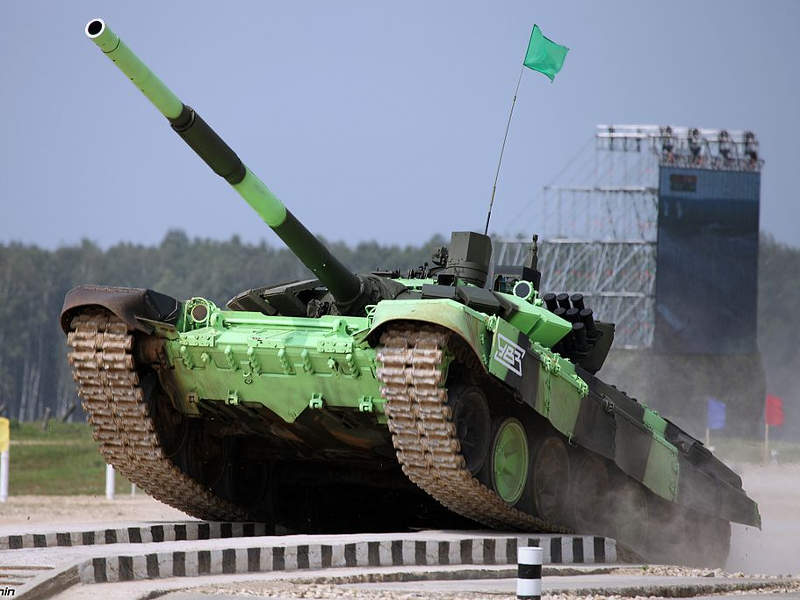Aki mást mond az úgy hazudik, mint @fip7 aki szerint a magyar harckocsizók itthon lőttek éles BM42-essel, ami amúgy szét is vitte volna a hk. lövegét...
... azóta is keresi a fotókat a gépén gondolom.
Ez már a sokadik személyeskedésed...
Aztán kiderült, hogy van itthon T-72AV ami képes kilőni....hm....
Szóval volt a lövészeten meglepetés nyugati részről (T-72M1 jobban szerepelt mint várták), viszont nem volt T-72B, T-72BM, illetve nem lőttek BM15-össel sem nyugati tankra.
Volt más lövészet is, USA-nkában:
Jane's International Defence Review 7/2007, pg. 15:
"IMPENETRABLE RUSSIAN TANK ARMOR STANDS UP TO EXAMINATION"
By Richard M. Ogorkiewicz
Claims by NATO testers in the
1990s that the armour of Soviet Cold War tanks was “effectively impenetrable” have been supported by comments made
following similar tests in the US.
Speaking at a conference on “The Future of Armoured Warfare” in London on the 30th May, IDR's Pentagon correspondent Leland Ness explained that US Army tests involving firing trials on 25 T-72A1 and 12 T-72B1 tanks (each fitted with Kontakt-5 explosive reactive armour [ERA]) had confirmed NATO tests done on other former Soviet tanks left behind in Germany after the end of the Cold War. The tests showed that the ERA and composite Armour of the T-72s was incredibly resilient to 1980s NATO anti-tank weapons.
In contrast to the original, or 'light', type of ERA which is effective only against shaped charge jets, the 'heavy' Kontakt-5 ERA is also effective against the long-rod penetrators of APFSDS tank gun projectiles, anti-tank missiles, and anti-armour rotary cannons. Explosive reactive armour was valued by the Soviet Union and its now-independent component states since the 1970s, and almost every tank in the eastern-European military inventory today has either been manufactured to use ERA or had ERA tiles added to it, including even the T-55 and T-62 tanks built forty to fifty years ago, but still used today by reserve units.
"During the tests we used only the weapons which existed with NATO armies during the last decade of the Cold War to determine how effective such weapons would have been against these examples of modern Soviet tank design.
Our results were completely unexpected. When fitted to the T-72A1 and B1 the 'heavy' ERA made them immune to the DU (Depleted Uranium) penetrators of the M829A1 APFSDS (used by the 120 mm guns of the Cold War era US M1 Abrams tanks), which are among the most formidable of current tank gun projectiles. We also tested the 30mm GAU-8 Avenger (the gun of the A-10 Thunderbolt II Strike Plane), the 30mm M320 (the gun of the AH-64 Apache Attack Helicopter) and a range of standard NATO Anti Tank Guided Missiles – all with the same result of no penetration or effective destruction of the test vehicles. The combined protection of the standard armour and the ERA gives the Tanks a level of protection equal to our own. The myth of Soviet inferiority in this sector of arms production that has been perpetuated by the failure of downgraded T-72 export tanks in the Gulf Wars has, finally, been laid to rest. The results of these tests show that if a NATO/Warsaw Pact confrontation had erupted in Europe, the Soviets would have had parity (or perhaps even superiority) in armour” – U.S. Army Spokesperson at the show.
Newer KE penetrators have been designed since the Cold War to defeat the Kontakt-5 (although Kontakt-5 has been improved as well). As a response the Russian Army has produced a new type of ERA, “Relikt”, which is claimed to be two to three times as effective as Kontakt-5 and completely impenetrable against modern Western warheads.
Despite the collapse of the USSR, the Russian Tank industry has managed to maintain itself and its expertise in armour production, resulting in modern designs (such as the T-90, the T-95 and mysterious Black Eagle) to replace the, surprisingly, still effective Soviet era tanks. These tests will do much to discount the argument of the “Lion of Babylon” (the ineffective Iraqi version of the T-72M) and export quality tanks being compared to the more sophisticated and upgraded versions which existed in the Soviet military’s best Tank formations and continue to be developed in a resurgent Russian military industrial complex."









